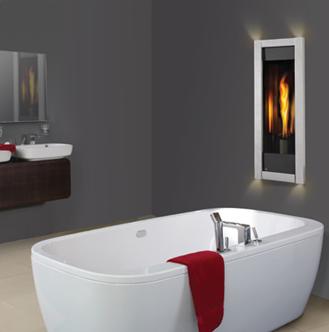zero-clearance fireplace

Napoleon Torch zero-clearance gas fireplace.
A zero-clearance fireplace is a factory-made unit designed so that it can be placed almost anywhere in a room, including right up against combustible materials such as wood, wall, or paneling; it requires no heart or special base. This flexibility of location stems from the materials and construction of the firebox which are such that, however hot the firebox may get internally, the outside of the box is so well insulated that it remains quite cool.
Pros and cons of zero-clearance fireplaces
As the name implies, a zero-clearance fireplace needs no buffer zone between itself and its surroundings so that it can be placed virtually anywhere (making it popular with both house builders and homeowners) and takes up much less space than a conventional fireplace. No masonry is needed to act as a shield for combustible materials, which greatly reduces the cost and time of installation. Also, zero-clearance fireplaces tend to be much more efficient than traditional masonry fireplaces; be aware, however, their efficiency varies widely so that choosing a good make and model is essential.
The only real downside to zero-clearance fireplaces is that, because they don't need a hearth or surrounding brickwork, they don't necessarily have the old-fashioned, comforting look of traditional fireplaces. Some thought needs to be given, therefore, to creating the appearance you want, whether it be ultra-modern or old-fashioned. And, although, there's great freedom as to where the unit may sit in a room– clearly some locations will be more practical and thermally effective than others. If in doubt, seek professional advice.
Types of zero-clearance fireplace
Many different types and sizes of zero-clearance fireplaces are on the market. Gas-based units are the most common, but wood-burning, pellet-burning, and electric zero-clearance fireplaces are available. For each type, there are different venting options. However, there is usually no need for an extensive masonry chimney. Most of these fireplaces use a system of ducts and vents that circulate air both internally and externally.
Sealed, gasketed doors and outside air supply sufficient to provide all combustion needs are features of all high-quality makes. Also, look for units (in the US, typically EPA-certified) that enable you to control the combustion air intake, and thereby the heat output and burn time.
